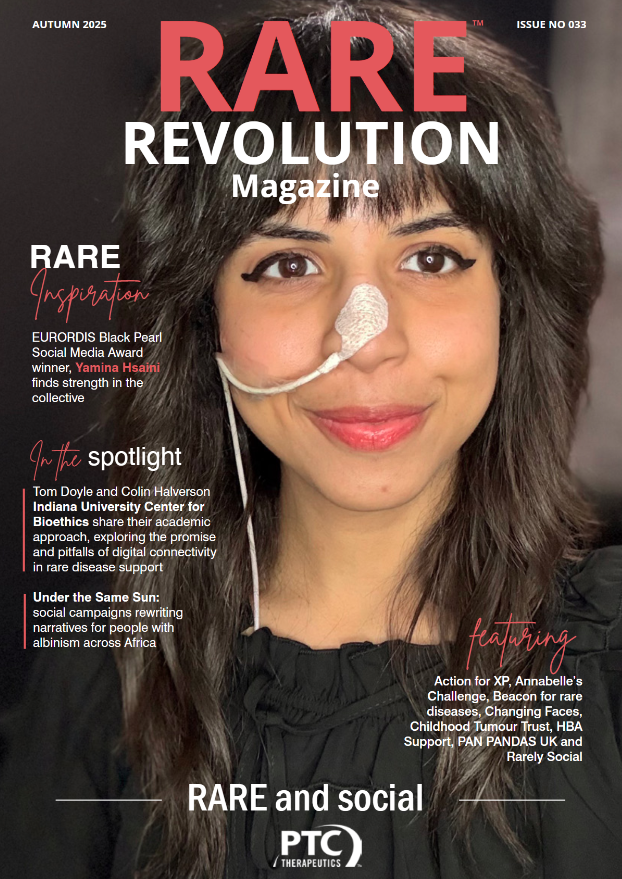EB World Congress—building on momentum and strength in numbers for epidermolysis bullosa

Share of voice for individual rare diseases is by its very nature, rare. Success has been found in the space by taking a strength in numbers approach, working together across different diseases and therapy areas to attract attention and funding. But when does a rare disease have sufficient researchers and clinicians invested in it to be ready to step out on its own and start to establish itself with dedicated conferences and events?
I was lucky enough to attend the inaugural EB World Congress, taking place at Park Plaza London Riverbank, between 20th – 23th January 2020, and see first-hand how taking on the substantial risk in creating the first ever Epidermolysis Bullosa (EB) specific congress, became an undisputed success.
The event was organised by the UK branch of DEBRA, a network of national patient advocacy groups. EB is a group of rare and genetic disorders of the skin characterised by skin fragility which can be severe and cause recurrent blistering of the skin in response to minor trauma or friction. It is estimated that there are more than 500,000 people living with EB worldwide.[1]
While there are organisations aiming to develop treatments for EB, it is important to note that at present there are no approved treatments for this painful and debilitating condition. However, despite there being no significant breakthroughs in an incredibly rare group of genetic disorders the worldwide EB community come out in force to support the event.
Expectations versus reality
Developments in healthcare are sustained through opportunities created at congresses for knowledge sharing and collaboration between companies and research groups. This gives a steer on where and how investigation and investment should be channelled.
The EB World Congress was no different, with the event organisers surprised by the sheer quantity and quality of abstracts submitted. The surprises continued as the initial estimation of 500 delegates for the event was exceeded by more than 50% demonstrating the value seen by the EB Community and the pharmaceutical companies investigating this space
Communicating through the uncertainty
OPEN Health were attending the conference as part our public relations work to support our clients attending the event. As with any inaugural event, the element of the unknown was the most challenging aspect to manage but the key to combating that uncertainty was creating an open and collaborative relationship with the event organisers. Understanding the needs of the organisers due to this being the first event of its kind meant we needed to be as flexible and accommodating as possible to allow for the scaling of expectations during the preparation stage.
What is Epidermolysis Bullosa?
There are three main types of EB [2]:
Simplex (EBS) – Although often life-altering, this is the most common subtype of EB1 causing less troublesome disease compared to other types. Except for its most severe types, EB simplex only affects the skin; blistering is limited, sometimes just restricted to the hands and feet and where clothing causes friction. Heat and humidity can also trigger the condition or make it worse. [2,3]
Dystrophic (DEB) – DEB is one of the major forms of epidermolysis bullosa. In mild cases, blistering may primarily affect the hands, feet, knees, and elbows. Severe cases involve widespread blistering and wounding that can lead to blindness, scarring and the deformity and rigidity of joints. Passed on by parents who may not be aware they are carriers.[3,4,5]
Junctional (JEB) – A rare form of EB. JEB has a broad spectrum of severity from milder forms to the lethal form of generalised severe JEB with most (87%) not surviving beyond the first year of life. In all forms of JEB, the most problematic wounds occur on the scalp and lower legs.[3,6]
We ensured this by providing certain materials earlier than required to give the organisers a benchmark of what the collateral looks like and the review time required to finalise it, or by simply keeping them informed on any and all traditional and social media activities that were being prepared on our side.
An additional challenge for any material development and communications around the EB World Congress was that the fourth and final day was a ‘community day.’ This is where the scientific exchange of the previous days had ended, and patient and carers were invited onsite for patient centric presentations, meetings and activities. This day was an important opportunity to help create a sense of transparency with patients where an open dialog is paramount to reassure those living with EB that there are investments and scientific movements that could one day impact their standard of care.
Vigilance was key in removing or replacing any material and information that would not be appropriate for the community day. This included working alongside the event organises to ensure any social media content was properly viewed both internally and externally before being signed off for use. This approach continued through to the event itself where everyone involved felt like colleagues all pulling in the same direction putting the potential improvement to the lives of those with EB first.
EB World Congress on the ground
Having spent the last seven years working across a variety of European and global healthcare conferences this was my first time supporting and attending a rare disease congress. Though patient centricity is always a huge part of these types of events, this congress honestly had the most palpable atmosphere I have experienced in terms of the enthusiasm and passion of addressing EB patients’ unmet need.
Speaking onsite to various Dermatologists, Medical Directors and Clinical Research Directors from across the globe, it was clear that the scientific developments being shared had a galvanising effect on everyone in attendance. EB experts from Ireland to Argentina seemed excited by being surround by likeminded people who are each fighting the devastating unmet need of EB patients. In retrospect, it should have been of no surprise that leaders in EB across the world jumped at the opportunity to attend.
A blueprint for EB & rare disease
Interest in rare disease has never been higher, the fact that you’re reading this on a platform dedicated to rare disease is evidence of that, but events like the EB World Congress demonstrate that interest in the space has turned into definitive investment. From experiencing the event first-hand and talking to those working incredibly hard to move the science forward, who are clearly excited by the opportunity to share and learn alike I hope the organisers can build on this momentum and turn this into an annual meeting.
Beyond that, to those working in other rare disease who may feel that an event such as this would be too high risk, that there wouldn’t be enough interest, that the developments in their respective area haven’t resulted in any advances for patients yet—I hope you see this as evidence that the risk is worth it. There will be more people than you know working hard and pulling in the same direction as you, and maybe a meeting such as this could help push the science through to the breakthrough that could really make a difference.
About the author: Ben Speller
Senior account manager,
Patient and brand communications
OPEN Health
Contact Ben
BenSpeller@OPENHealthGroup.com
+44 (0)7539 341548

For more information on the EB World Congress please visit: ebworldcongress.org

More from OPEN Health in RARE Revolution Magazine

You can read more from OPEN Health in our latest edition, Spring 2020, issue 015 which shines a spotlight on the professionals and places that are driving change and making an impact on the world of rare disease.
Read in full HERE
References
[1] Debra International, Causes and Subtypes. Available at: http://www.debra-international.org/what-is-eb/causes-and-subtypes.html Last accessed: February 2020
[2] DEBRA UK (2018). What is EB? Available at: https://www.debra.org.uk/what-is-eb/what-is-eb. Last access: February 2020
[3] Denyer J, Pillay E, Clapham J. Best practice guidelines for skin and wound care in epidermolysis bullosa. An International Consensus. Wounds International, 2017.
[4] Genetics Home Reference (2018). Dystrophic epidermolysis bullosa. Available at: https://ghr.nlm.nih.gov/condition/dystrophic-epidermolysis-bullosa#inheritance. Last access: February 2020.
[5] Intong et al. Inherited epidermolysis bullosa: New diagnostic criteria and classification. Clinics in Dermatology 2012;30:70–77.
[6] Marinkovich MP (2018). Epidermolysis Bullosa. Available at: https://emedicine.medscape.com/article/1062939-overview#a2. Last access: February 2020

OPEN Health is highly invested in the delivery of positive outcomes in rare disease.
We have extensive experience across our practices having worked with many clients within the area of orphan and ultra-orphan medicine.
Our broad capabilities help us to recognise that every scenario is unique and we therefore apply bespoke, cohesive communications solutions to ensure optimal outcomes are achieved for our clients and the patients they serve


